The Mystery Behind the Stripes
Ever glanced at your brand-new tires and wondered what those strange colored stripes are doing there? Blue, red, yellow—sometimes all three? They’re not for decoration, and they’re definitely not a style statement. In fact, they serve a much more practical purpose. While often overlooked, these lines are part of a sophisticated internal system used during tire manufacturing. They may fade quickly once you start driving, but their impact on production, safety, and inventory management is huge.
Let’s break it down and decode what those colorful lines are really trying to tell us.
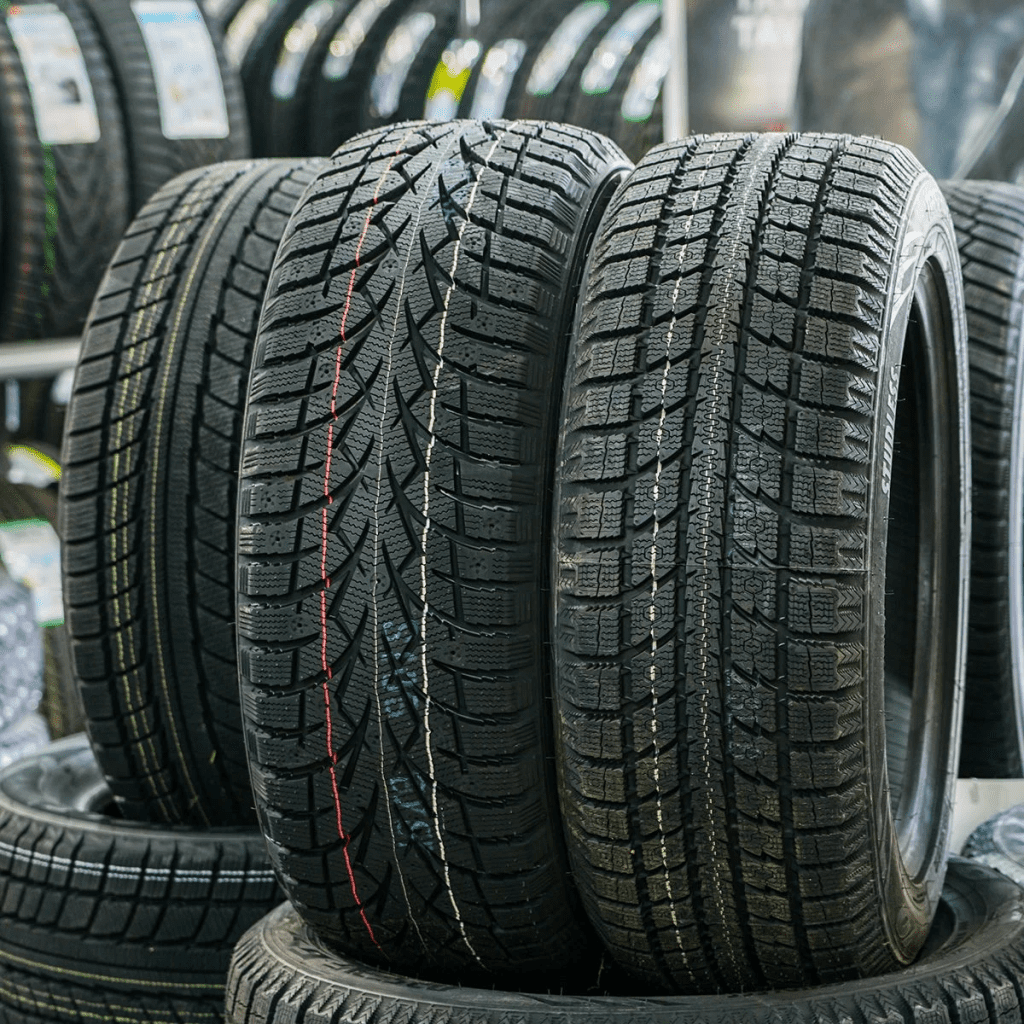
Not Just Pretty Lines: Why They’re There
The colored stripes on new tires are basically a quick visual ID system for the factory floor. Think of them like a barcode for rubber. Workers use them to identify specific characteristics of the tire during production—like size, tread pattern, rubber type, or even the assembly line it came from.
These lines aren’t mandated by law, unlike the stamped information on the tire sidewall (which includes things like size, speed rating, and manufacturing date). But they do help streamline operations and reduce errors, especially when hundreds of similar-looking tires are coming down the line every hour.
Video : What Are Those Colored Lines on New Tires?
So, next time you see them, know they’ve already served their behind-the-scenes purpose before you even hit the road.
Color Codes: What Do They Actually Mean?
Here’s where things get interesting—and a little confusing.
There is no universal standard for what each color means. Yep, that red line on a Goodyear tire could mean something totally different than the same red line on a Michelin or Bridgestone tire. It might indicate a unique tread compound, a high-performance category, or just the position in a batch of tires.
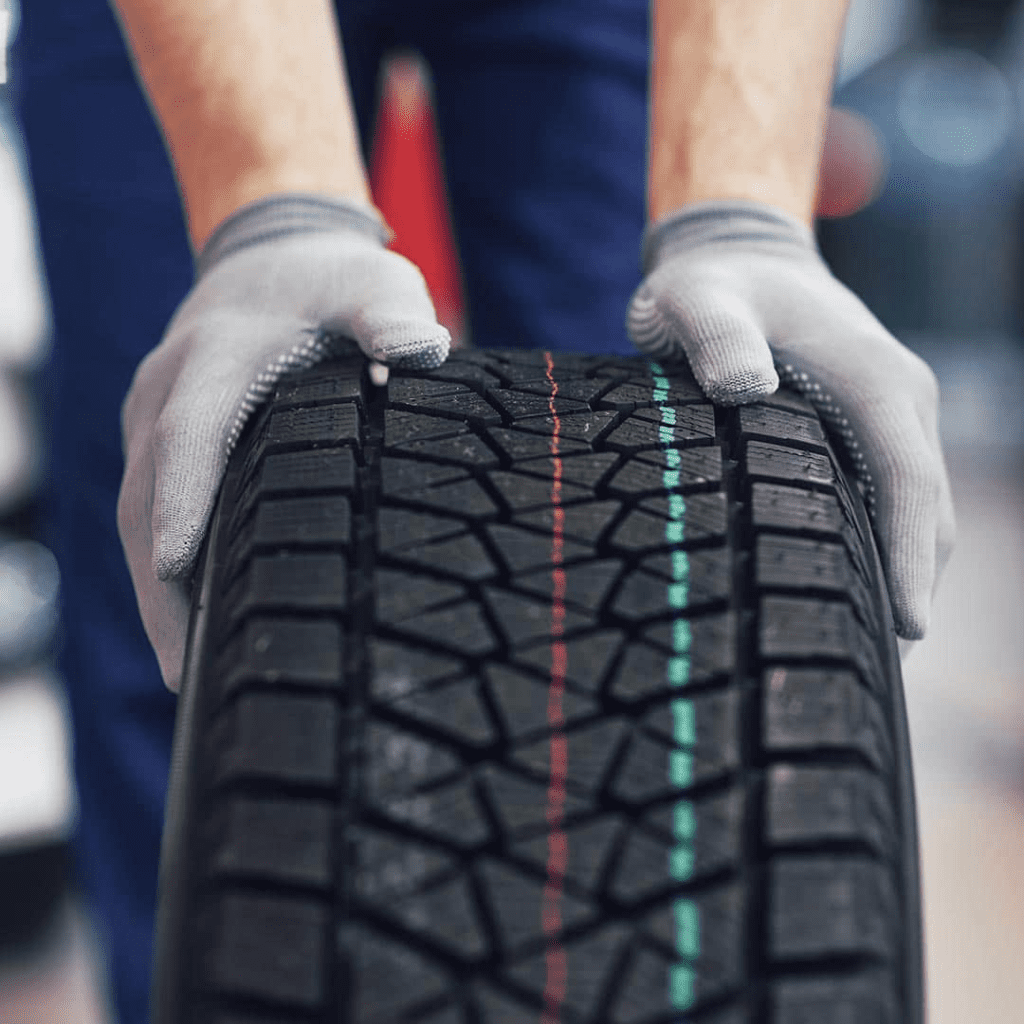
Each tire manufacturer designs its own internal color coding system based on their needs, location, and even the type of tire being made. It’s like a secret language, and unless you work for the company, you’re not meant to understand it fully.
Dotted Clues: What About Those Red and Yellow Dots?
In addition to stripes, you might also spot small red or yellow dots on your new tires. These aren’t part of the manufacturing barcode system—they’re for tire installers.
The yellow dot usually marks the tire’s lightest point, while the red dot shows its highest point of radial force variation (basically where it’s the most “out of round”). Technicians use these markers to align the tire with the wheel’s heaviest or lightest spot to ensure proper balance, which leads to smoother rides and longer-lasting tires.
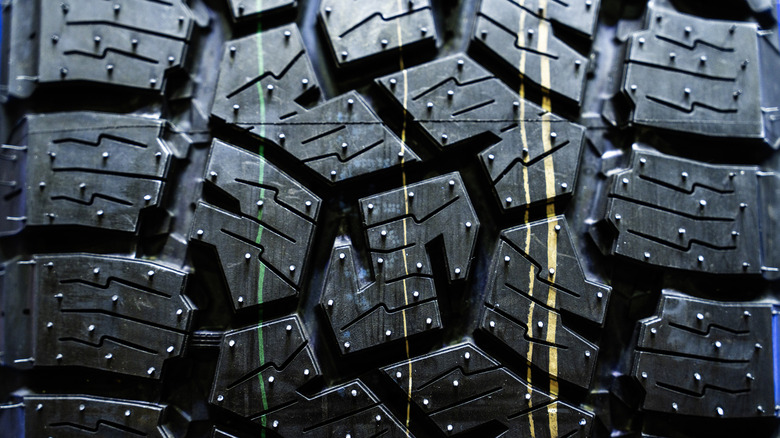
It’s a tiny detail, but one that can make a big difference in performance and safety.
Do These Lines Affect Safety?
The lines themselves? No. They won’t make your car drive any better or worse, and they don’t impact traction, braking, or treadwear. But the process they represent—quality control, identification, and material matching—absolutely does affect safety.
Colored lines help ensure that the right components get matched during assembly. Imagine a high-speed performance tire accidentally getting built with the wrong rubber compound. That mismatch could be dangerous. These color codes help prevent those mistakes before the tire ever leaves the factory.
Video : What Is the Meaning of the Colored Lines on New Tires?
So even though the lines disappear after a few drives, the role they played sticks around in every mile you drive.
How Long Do the Lines Last?
Don’t get too attached—they won’t be there long.
Since these colored lines are painted directly onto the rubber, they typically start fading within the first few hundred miles. Some drivers even choose to wash them off early if they prefer a clean tire look. But whether you leave them on or scrub them away, rest assured they have zero impact on tire performance.
They’re just temporary marks, kind of like the little rubber “hairs” on new tires that wear off with use.
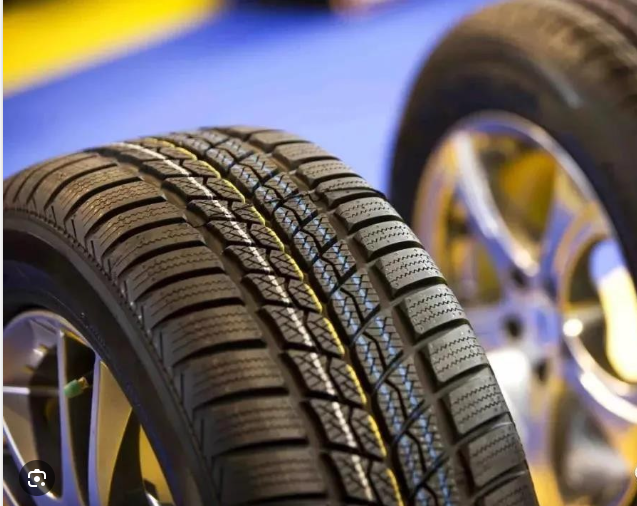
Sidewall Codes: Where the Legal Stuff Lives
While the stripes handle the behind-the-scenes magic, the real legally required information lives on the tire’s sidewall.
This includes:
- Tire size
- Load and speed ratings
- Treadwear and traction grades
- DOT (Department of Transportation) code
- Date of manufacture
- Tire Identification Number (TIN)
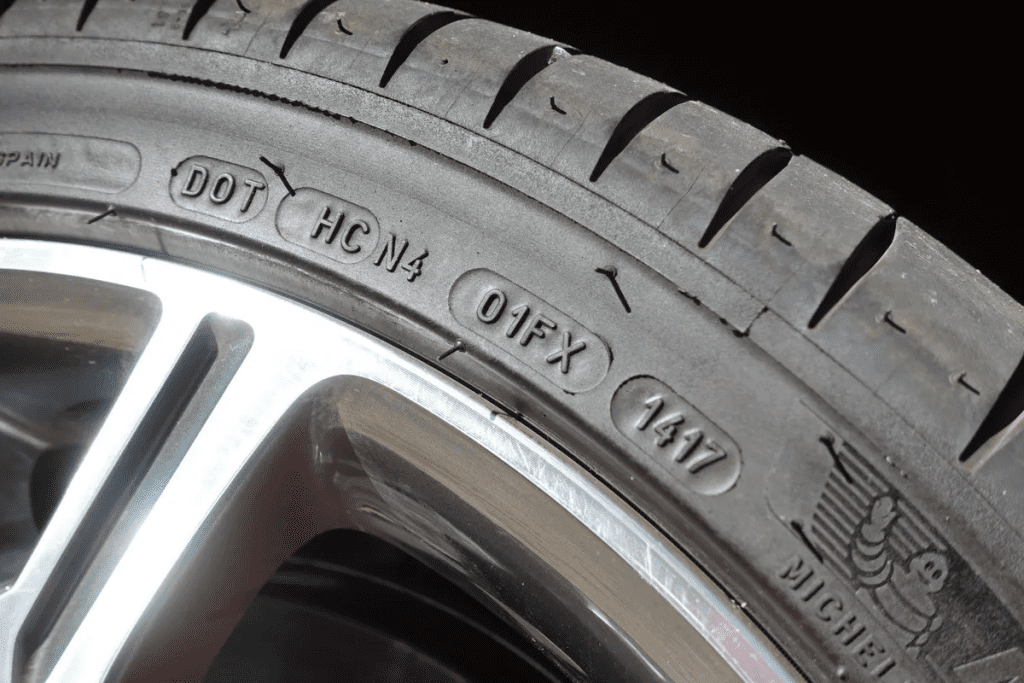
These are regulated by the U.S. Department of Transportation to help with recalls, warranties, and safe installation. So if you’re ever in doubt about your tires, the sidewall is where you should be looking—not the pretty colors
The Big Picture: Why It All Matters
While those stripes might seem like minor details, they’re part of a much larger system that keeps tire manufacturing efficient and accurate. They help prevent costly errors, improve inventory control, and ensure every tire is exactly what it’s supposed to be.
In the world of tires, where rubber meets the road literally, every detail counts—even the colored ones you barely notice.

Conclusion: Next Time You See Stripes, You’ll Know the Code
So the next time you spot those odd-colored lines on your fresh new tires, don’t just shrug them off as factory graffiti. They’re silent workhorses of the tire world—guiding, organizing, and preventing errors long before your car ever touches the pavement.
They may fade fast, but their job is done before your journey even begins.